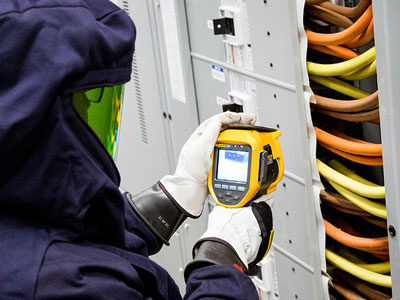Generally speaking, Preventive Maintenance of equipment has been a longtime Best Practice, and specific to electrical gear – is now moving into the realm of regulatory requirement. Interestingly – many Plant Engineers, Facilities Techs and other maintenance staffers who would not dream of ignoring PM on chillers, air conditioners, or other equipment – have not included electrical gear in their PM programs. That being said, we all know the disruption and/or damage that can occur when electrical gear fails.
The Regulations
The Occupational Safety and Health Administration (OSHA) is a federal agency that operates under the U.S. Department of Labor. The mission of OSHA is: “to assure safe and healthful working conditions for working men and women by setting and enforcing standards and by providing training, outreach, education and assistance.” (Source: OSHA.gov)
To address those hazards related to electrical safety, OSHA relies upon the consensus standards established by NFPA in its 70E Standard for Electrical Safety in the Workplace. OSHA refers to these standards when developing regulations for the CFR (Code of Federal Regulations) pertaining to federal labor laws. For example, OSHA requires that employees be trained to recognize and protect themselves from specific electrical hazards. So while the NFPA 70E standard itself is not law, it establishes the safety guidelines which enable employers to comply with OSHA laws dealing with electrical workplace safety and required employee electrical safety training.
Electrical PM (EPM) FAQ’s
Am I really required to do electrical PM?
Actually, this can be answered from a couple different perspectives. First, from a “Best Practices” point of view – are you “required” to do PM on chillers? How about air conditioners? Your vehicle? Preventive Maintenance is an accepted Best Practice, because it works. The benefits are numerous and measurable.
From a regulatory point of view, the requirement is a bit more nebulous, but it is there. OSHA has many requirements, including 5(a)1 – the General Duty Clause. Regarding the topic of electrical safety and maintenance, OSHA defers to NFPA 70E. NFPA 70E, along with NFPA 70B state the requirements for electrical maintenance.
How is PM specified for electrical gear?
Always start with the equipment manufacturer. It is important to add that especially with new equipment, Manufacturers’ recommendations must be followed in order to keep the warranty intact. Beyond that, The primary bodies that the industry refers to for standards and procedures are NETA, ANSI and IEEE. NETA is the (Inter)National Electrical testing Association, ANSI is the American National Standards Institute, and IEEE is the Institute of Electrical and Electronics Engineers.
How often is EPM necessary?
Again, the Manufacturer is King here, but in absence of specifics, ANSI/NETA provide some great tables regarding PM frequencies, which can also be adjusted depending on severity of environment/use, or criticality.
Who can perform this work?
This type of maintenance testing is very specialized. For Infrared Thermography, ask your testing company about their qualifications to do IR testing. For all other testing we recommend using a NAC (NETA Accredited Company). Having NETA Accreditation means the testing company has been audited regarding training, equipment and qualifications.
C3 Engineering is a NETA Accredited Company – Contact Us Today!


